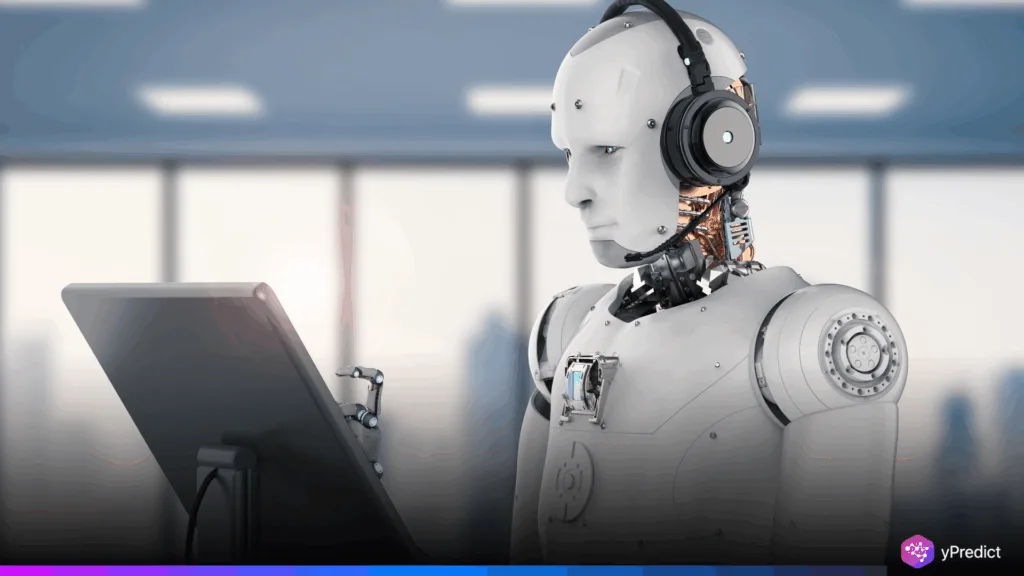
The discussion about AI job automation is not theoretical anymore. David Scott Patterson, who is a conservative commentator in technology, says regards the world is nearing a tipping point. When Patterson first started, he mentioned it might be jobless by 2027 or 2028. He now believes it might start by the end of 2025. This is no longer a theoretical conversation. We have visible transformations in AI and humanoid robotics that are mimicking cognitive labor, but also the physical conversion of once human tasks.
Many people disregarded these announcements when Patterson began working with AI robotics, but the speed of growth in AI complexities, particularly with regards to decision-making capabilities, coding, logistics, and emotional interaction, and in the past few months, the enhanced prototypes of humanoid robots that can walk, pick up objects, and also have social conversations, suggests the walls are coming down faster than some people thought possible. This is no longer a tech conversation, it is a societal change that is on the verge of happening.
The Acceleration of AI Job Automation
Artificial intelligence job automation has transcended typical repetitive office tool. Today’s large language models are capable of creating software, managing businesses, and even giving legal advice. There has been a rush of companies to embrace these systems for productivity reasons while reducing their labor costs. Patterson argues that this swift uptake has drastically shortened the automation timeline.
From logistics companies utilizing AI to fully plan their deliveries, to banks eliminating teams of analysts in favor of an AI forecasting system, industries that were perceived to be insulated from automation are rapidly changing. The application of humanoid robots for manufacturing and customer service illustrates that a future with no task too complicated or related to humans isn’t a far-flung possibility. Companies are not simply gearing up for automation. They are deploying it now.
Humanoid Robots Are Gaining Real-World Utility
The urgency Patterson feels hinges in part upon humanoid robots coming into the workplace. Companies like Tesla, Figure AI, and Sanctuary AI have demonstrated bipedal machines that can traverse real spaces and perform real physical tasks. These robots are not a work of science fiction, they are already deployed on factory floors, in warehouses, and soon to be in our homes.
These machines are not advertised as the next robot to vacuum your home. They pair mobility with a sophisticated artificial intelligence that allow them to follow commands, make decisions, and engage with humans in real-time. This technology has the physicality of a human worker and the intelligence of an AI. With the convergence of these technologies, we will soon have humanoid robots that are not just tools, but the direct replacement of jobs.
Why the 2030 Timeline Feels Too Far Now
For years, 2030 was the accepted estimate for full-scale workforce replacement. However, the recent pace of innovation has shattered that assumption. AI systems are learning faster than expected. Their deployment has become more affordable and scalable. This combination is why Patterson now believes full AI job automation could begin as early as 2025, gaining momentum year by year.
The early signs are here: call centers run on AI, retail checkout replaced by self-service and robotics, and programming handled by natural language prompts. These developments aren’t fringe, they’re becoming the industry standard. If governments and societies don’t prepare now, the consequences could include widespread displacement, economic shifts, and identity crises tied to the meaning of work.
The World Must Now Prepare for Workforce Replacement
AI job automation and humanoid robots aren’t future concepts anymore. They are today’s reality. Leaders, educators, and citizens must urgently rethink how they view employment, skills, and human purpose. New policies around universal basic income, reskilling programs, and AI ethics need to emerge fast.
Patterson’s view may sound extreme, but the data supports his warning. The question is no longer if AI will replace all jobs. It’s how soon. With 2027 now on the table, the global workforce must shift from denial to preparation. Only then can we navigate this technological disruption with resilience and intention.






